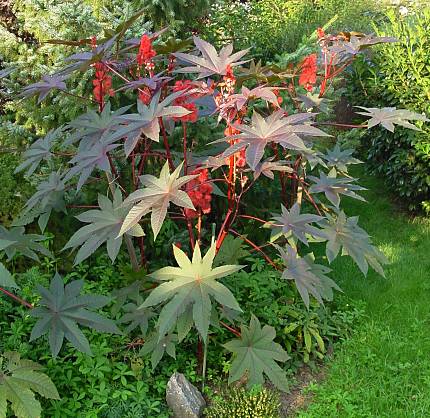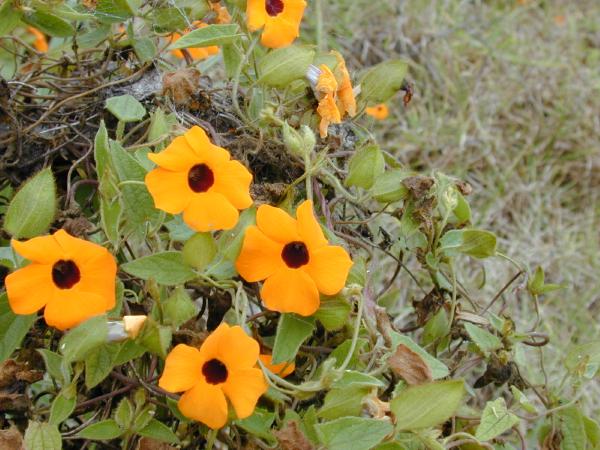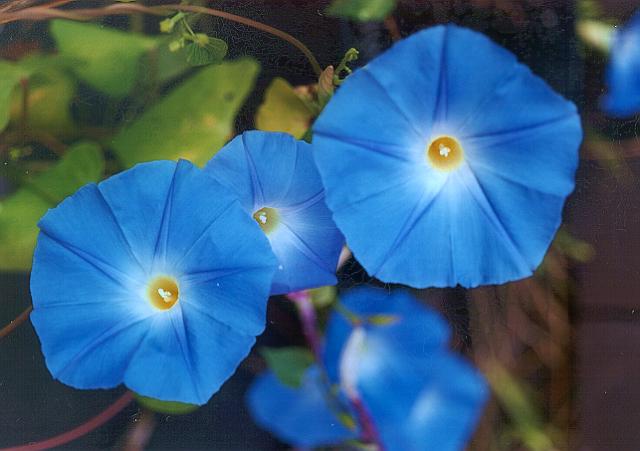Annuals and Plants Grown as Annuals
As it's getting to that time of year for sowing the seeds of annuals, I thought it prudent to update on some of the hints we published earlier.
Some annual seeds or half hardy perennial (grown as annuals) can benefit from extra treatments not mentioned in the general post about these seeds.
Nasturtiums
We have found that the best way to ensure even germination of these seeds is to soak them in warm (40 C) water for up to 48 hours or until they swell noticeably - change the water regularly when it discolours. We trialled this last year and the year before and found that the germination percentages improved dramatically - they were already good, but here we got almost 100%.
We think because the seeds dry rapidly to a low moisture content, the use of a soak revives them very quickly allowing them to germinate as soon as the temperatures are correct. We got some very big plants last year from a sowing outdoors in late April of seeds that had been soaked and were planted where we wanted them to flower. The year before we tried the same but grew them in plugs, again the germination was rapid, but we noticed that the plants still suffered the slight (7 day) check in growth when they were planted out.
Of the methods we tried, both worked but we recommend direct planting for better, stronger plants.
Castor Oil Plants
A tender fast growing perennial, most often grown as an annual - here again we soaked the seeds which is not what most sites say. The germination was rapid and even, then plants were then grown on in pots. When soaking and changing the water, take care of the water and keep it away from pets and children - Castor Oil Seeds are poisonous but if handled with care this method is quite safe.
The resulting plants were all of an even height and grew well. They were hardened off in May and planted out in late May/Early June. They grew to 6 feet tall in the first season and flowered in later July and continued to the first hard frost.
Thunbergia (Black Eyed Susan)
Again we soaked the seeds here, this time for 72 hours, and planted the seeds a few mm deep in the warmth of a propagator set at 20 C. A warm room would do as long as it is not too close to a window sill unless bottom heat is provided. The seeds should now take around 7 - 21 days to show if conditions are right. They can be sensitive to temperature fluctuations (especially sudden drops) and this can extend the germination times.
Once the are growing keep them growing and pinch out the tips for a bushier plant with more flowers - although if you want height, don't do this, allow it to grow up and twine naturally.
Ipomoea (Annual Morning Glories)
Here we also include Mina lobata as it requires the same treatment. Soak the seeds for 36 hours, they take on water fast and may well split in the soak. After soaking we then sowed ours thinly on damp tissue in a sealable take away meal tray or food saver. This way we could remove the germinated seeds and pot them up either one to a small cell or 3 to a 9 cm pot. They germinate quickly if kept at 20 C.
Growing on is rapid, this means that you do not want to be sowing morning glories until mid-April if you intend them to go out in late May. They take around 6 - 8 weeks to take over the growing location and will flower at around 9 - 10 weeks from seed. When growing on, give them something to climb up, such as a pea stick or a cane, this way they will go where you want them to and not where they end up.




No comments:
Post a Comment